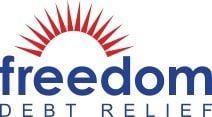How to File Chapter 13 Bankruptcy
Chapter 13 bankruptcy offers a fresh start if you’re disciplined: Restructure debt, keep your home, and repay over three to five years.

Many, or all, of the products featured on this page are from our advertising partners who compensate us when you take certain actions on our website or click to take an action on their website. However, this does not influence our evaluations. Our opinions are our own. Here is a list of our partners and here's how we make money.
Chapter 13 bankruptcy lets you restructure overwhelming debts under the protection of a federal court, setting up a repayment plan over three to five years.
This is also called “wage earner's” bankruptcy, because you must have regular income to qualify. The goal is to resolve some debts and get current on secured loans — those with collateral, such as a home or car. Here's how to figure out if Chapter 13 bankruptcy is right for you and how to file.
Who's eligible for Chapter 13 bankruptcy?
To qualify for Chapter 13 bankruptcy:
- You must have regular income .
- Your unsecured debt cannot exceed $526,700 , and your secured debt cannot exceed $1,580,125 .
- You must be current on tax filings.
- You cannot have filed for Chapter 13 bankruptcy in the past two years or Chapter 7 bankruptcy in the past four years.
- You cannot have filed a bankruptcy petition (Chapter 7 or 13) in the previous 180 days that was dismissed for certain reasons, such as failing to appear in court or comply with court orders.
- You must have completed a credit counseling course in the 180 days before filing. You can find a list of approved credit counseling agencies here.
Even if you qualify for Chapter 13 bankruptcy, make sure you know the difference between Chapter 7 vs Chapter 13 bankruptcy.
If you don’t qualify for Chapter 13, consider looking into other debt relief options.
Look into whether you have too much debt. If you don’t qualify for Chapter 13, consider looking into other debt relief options.
Chapter 13 bankruptcy pros and cons (according to Reddit)
We sifted through Reddit forums to get a pulse check on how users feel about Chapter 13 bankruptcy. We used an AI tool to help analyze the feedback and then summarized insight. People post anonymously, so we cannot confirm their individual experiences or circumstances.
Pros
Stops harassment from debt collectors.
Often results in paying less than the full repayment amount.
It's a structured plan with an end date.
Cons
Payments and attorney fees can be high.
You must follow a strict budget throughout your repayment plan.
The process is complex.
Step-by-step guide to filing for Chapter 13 bankruptcy
When considering bankruptcy, meet with a credit counselor from a nonprofit credit counseling agency and with a bankruptcy attorney. Both initial consultations should be free. These meetings will help you understand your circumstances and decide whether bankruptcy is the best route.
In Chapter 13 bankruptcy, you and your attorney will work to prove your eligibility for a debt reorganization to a bankruptcy trustee, who administers the proceedings. You’ll get court approval of a plan to repay both unsecured and secured debts in part or in full. You'll pay over three to five years and will retain your assets. At the end, the remainder of some debts may be forgiven.
Once you’ve decided to file, you’ll go through these steps:
- Credit counseling: Complete pre-filing bankruptcy counseling through a nonprofit credit counseling agency. Your counselor may also help you draft a repayment plan.
- Get an attorney: Hire a qualified bankruptcy attorney. Chapter 13 is very complex, and skipping a step or improperly filling out a form can lead to your case being thrown out or not having certain debts covered.
- Fill out paperwork: Your attorney will help you fill out the various forms required to file. You’ll need to gather information on your whole financial picture, including debts, income, property and monthly expenses.
- Submit bankruptcy petition: Also known as “filing” the bankruptcy, submitting the various forms kicks off the process. A bankruptcy trustee will be appointed. As soon as you file, you enter what’s called an “automatic stay,” which means that most attempts to collect on your debts must cease.
- Submitting payment plan: Within 14 days of filing the petition, you must submit a proposed payment plan. You must start making payments on the plan within 30 days of filing the petition, even if it hasn’t been approved yet.
- Meeting of creditors: Between 21 and 50 days after filing the petition, the trustee will host a meeting in which creditors can discuss any issues they have with you.
- Confirmation hearing: No later than 45 days after the meeting of creditors, you, the trustee and creditors who wish to attend meet in court to confirm the payment plan.
- Payment: Over three to five years, creditors are paid as agreed under the plan.
- Debtor education course: Before the Chapter 13 bankruptcy is complete, you must complete a “debtor education course” from a nonprofit credit counseling agency.
What’s the Chapter 13 success rate?
About half (49%) of Chapter 13 consumer cases closed in 2024 were discharged after completing repayment plans, according to data from U.S. federal courts . Of cases that were dismissed for other reasons, the most common one was failure to make plan payments.
Is Chapter 13 bankruptcy right for you?
Consider bankruptcy if your problem debts total more than 40% of your annual income or would take five years or more to pay off even if you took extreme measures. Chapter 13 may be your best bankruptcy route if:
- You want to keep certain assets or you’re behind on your mortgage or car payments and want to make them up over time.
- Your debts include student loans, child support or other debts that either can’t be or are highly unlikely to be discharged under Chapter 7 or Chapter 13, but paying off other debts would help with those.
- You have a co-signer on an account in arrears. With Chapter 7, creditors are free to go after your co-signer even though you’re protected. If you file Chapter 13, you can arrange to pay off the co-signed debt in your repayment plan, protecting your co-signer.
Use the free initial consultation that credit counselors and many bankruptcy attorneys offer to learn about bankruptcy and other debt relief options, such as a debt management plan through a credit counseling agency.
Some debts typically can’t be erased in bankruptcy, including recent taxes, child support and student loans. Bankruptcy still may be an option for you, though, if erasing other kinds of debt — credit cards, personal loans, medical bills — would free up enough money to pay the debts that can’t be erased.
Chapter 13 bankruptcy takes longer than the other common form of consumer bankruptcy, Chapter 7, which forgives most forms of debt, like credit cards, medical bills and personal loans.
How long does Chapter 13 bankruptcy stay on your credit report?
Chapter 13 bankruptcy will fall off your credit report seven years after you file, as long as you’ve completed your repayment program successfully.
Although a bankruptcy will linger on your credit reports for years, you can immediately start to offset that negative mark with positive information. Make sure you pay every bill on time, because payment history has the largest influence on your scores.
Other steps you can take to restore your credit include making and following a budget and using credit carefully. If you find it hard to get new lines of credit, consider starting with a secured credit card.
Looking for an alternative product to pay down your debt?
Learn more about our debt relief partners belowArticle sources
NerdWallet writers are subject matter authorities who use primary,
trustworthy sources to inform their work, including peer-reviewed
studies, government websites, academic research and interviews with
industry experts. All content is fact-checked for accuracy, timeliness
and relevance. You can learn more about NerdWallet's high
standards for journalism by reading our
editorial guidelines.
- 1. IRS. Chapter 13 bankruptcy - voluntary reorganization of debt for individuals. Accessed Sep 5, 2025.
- 2. United States Courts. BAPCPA Report - 2024. Accessed Sep 5, 2025.
Related articles









